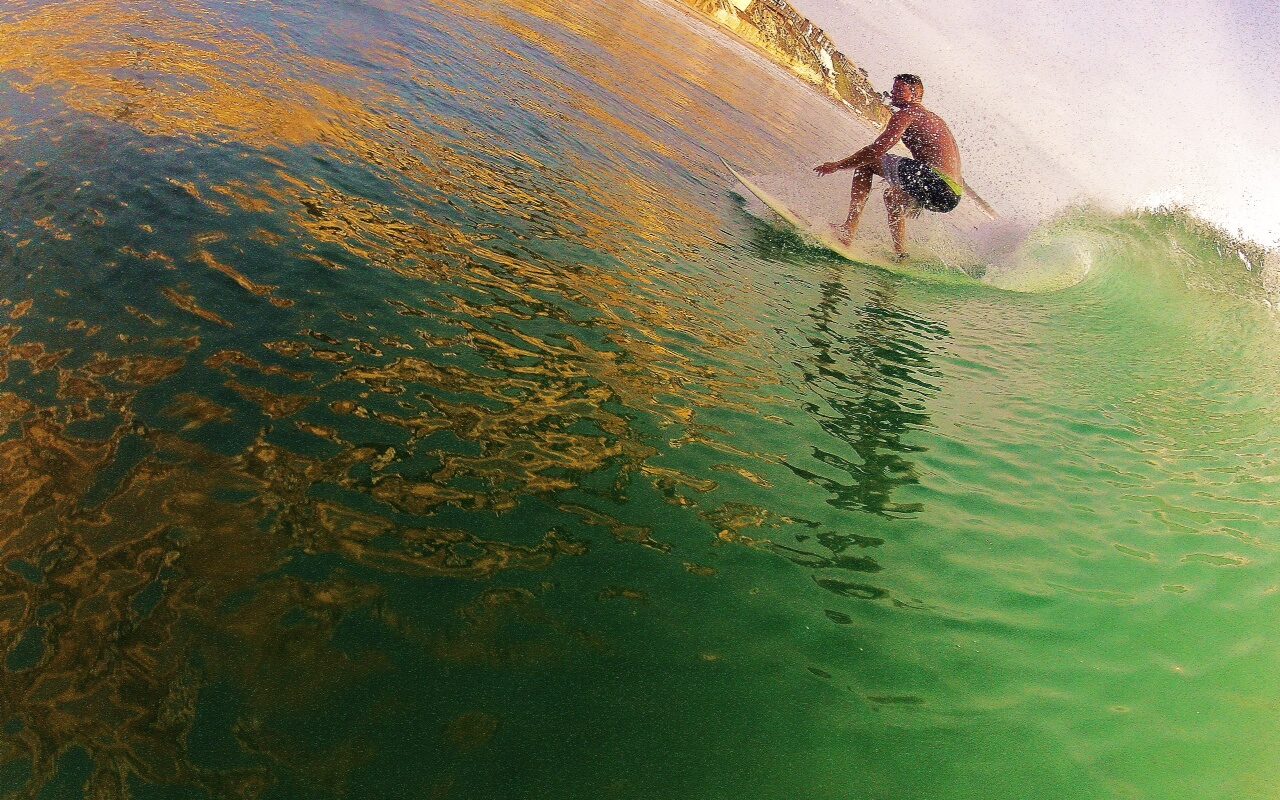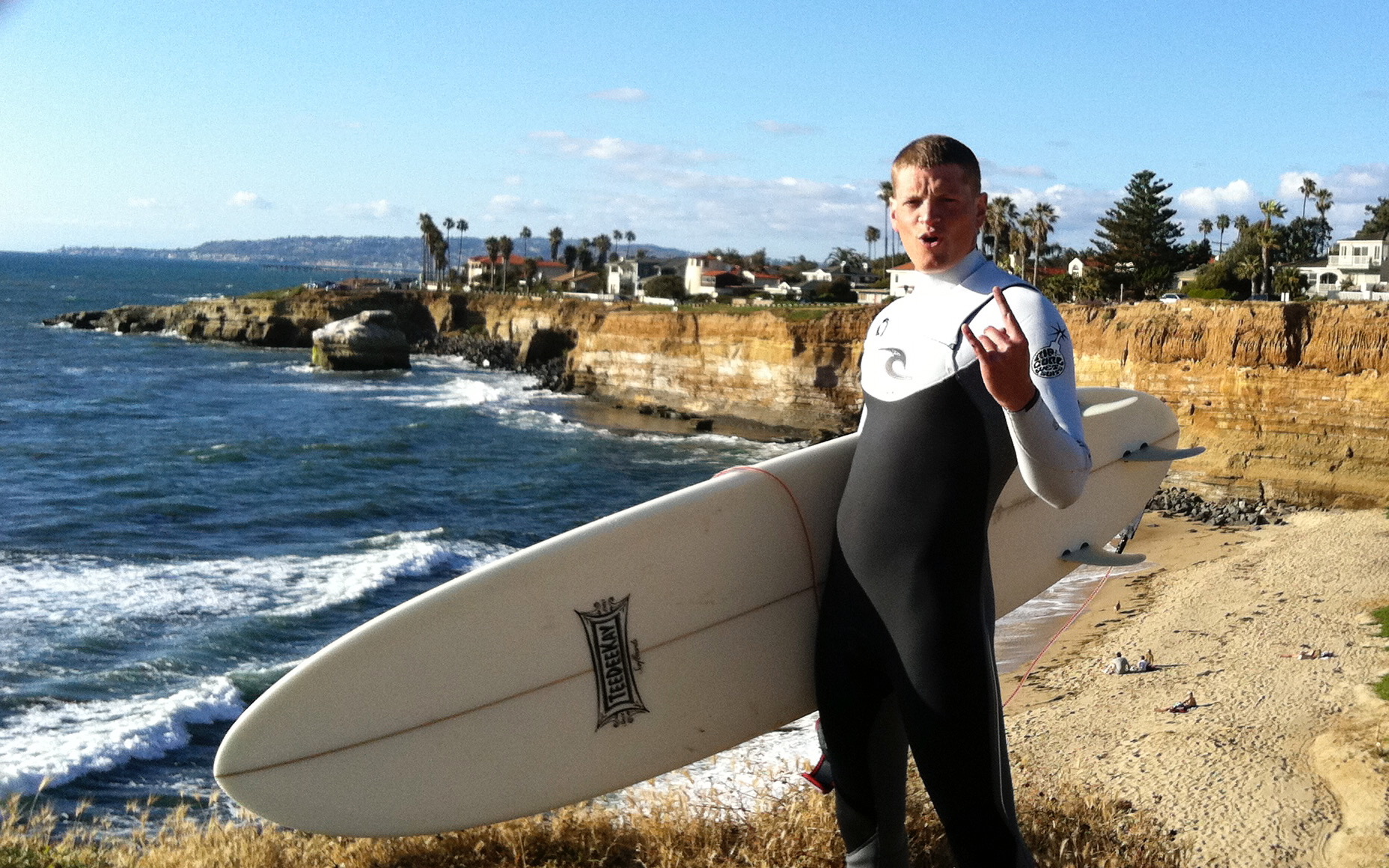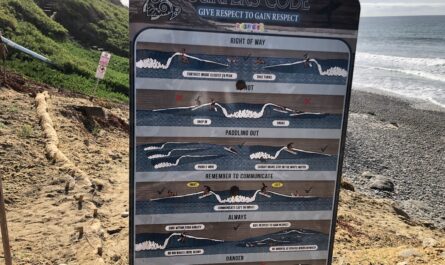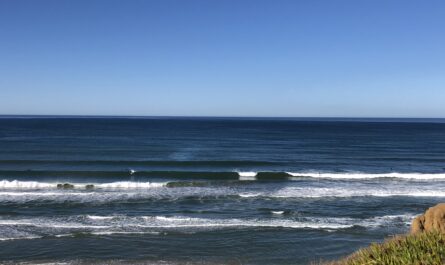Choosing a wave that suits your style is critical to enjoy your surf session. A wave is also called a break. There are three types of surf breaks. The types of surf breaks include a point break, reef break, and beach break.
In this post, learn about the three types of surf breaks, where each type is found in San Diego, and common terms to help you understand wave formations.
The Common Parts of a Surf Break
To begin, it’s helpful to understand the different parts that comprise a wave. This will also help you better understand how each type of surf break is different.
- Face or Wall is the area where the surfer rides.
- Peak is the steepest point of the wave, exactly where the surf ride should start.
- Lip of a wave is the edge that imitates a falling pattern (falling lip).
- Trough is, of course, the bottom of a wave.
- Tube or Barrel refers to the long cylindrical space that imitates the motion of moving towards the surfer, who is on the wall of the wave. It is the long space between the open wall and the “lip” of a wave. Most surfers are in search of a glorious barrel ride 🙂
The Types of Surf Breaks Explained
As mentioned, there are three types of surf breaks. In this section, I’ll describe what makes each of these different types of surf breaks unique.
Point Breaks
Surfing point breaks, or surfing point waves, originate from a “point” that keeps wrapping around a coastline. It may even wrap for minutes or miles along a coastline before it submerges to the shore. The ride is fantastic, and it definitely gives you an adrenaline rush. This is especially if you’re a fan of the popular 1991 film, Point Break, starring Keanu Reeves and Patrick Swayze. Like the characters in the film, you’ll have a great time testing your surfing skills in different point breaks.
Point breaks are long, rippable waves that allow for deep carves. Point breaks are also one of the rarest types of surf breaks to encounter. For these reasons, it is one of the most sought after surf breaks among surfers. Fortunately, San Diego has a few point breaks. Some of my favorite point breaks in San Diego include Swamis Surf Spot, PB Point, and Terra Mar Point.
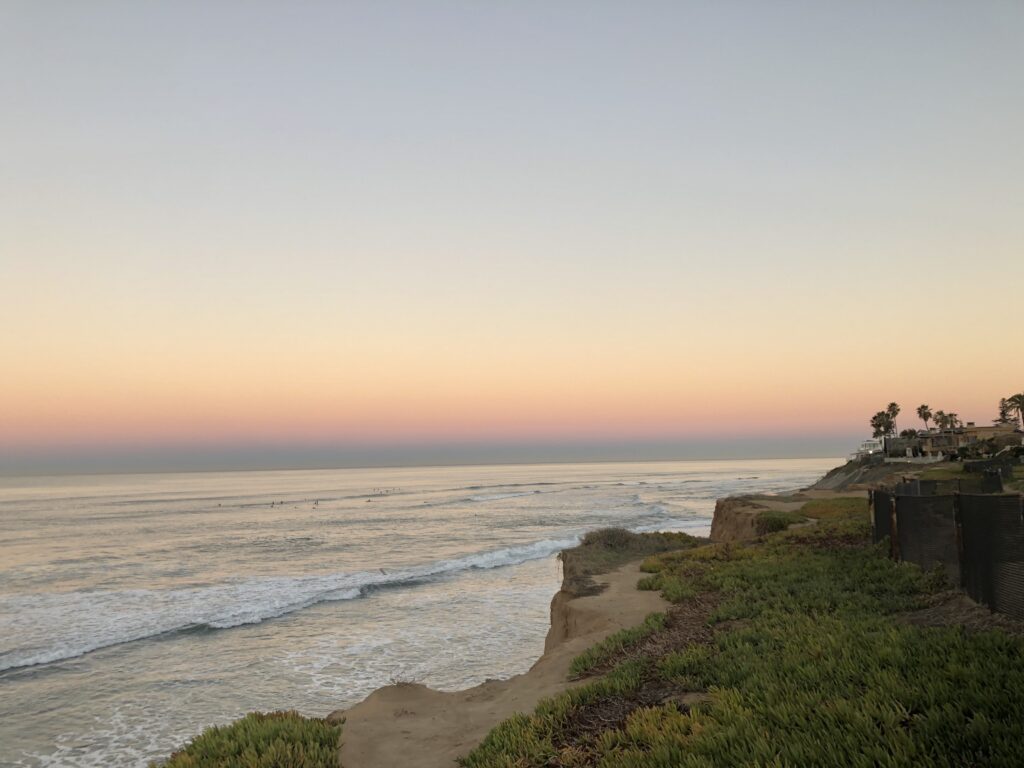
Reef Breaks
Next up, is one of the most thrilling surf breaks. Yes, we are talking about reef breaks. Reef breaks typically break from a coral or a rock.
Reef breaks are characterized by a shallow and sometimes jagged bottom. Some reef breaks are softer with sea grass covering the rocks and others may even have sea urchins! However, urchins are usually only a nuisance in warmer waters of the Caribbean. As such, you don’t have to worry about them in the cooler waters of San Diego.
One tell tale on where waves break over a reef is to look out for boils in the water. The water ripples and boils form right as the wave begins standing tall. As such, surfers can normally predict where it will peak and break according to the swell direction.
Even though you can predict the wave, many reef breaks are fast, hollow and sometimes even barrel. A great example of this is Pipeline in Hawaii. These types of surf breaks require swift maneuvering and are better for advanced surfers. However, San Diego also has many mellow reef breaks that even a beginner can ride. Here a few well known reef breaks in San Diego along with my recommended level of surfing ability:
- Cardiff Reef (Beginner to Intermediate)
- Seaside Reef (Intermediate to Advanced)
- Del Mar 11th Street (Beginner to Intermediate)
- Windansea (Intermediate to Advanced)
- Hospitals (Advanced)
- Tourmaline Surfing Park (Beginner) – also one of the best longboarding surf spots in San Diego
- Sunset Cliffs Surf Spot (Intermediate to Advanced)
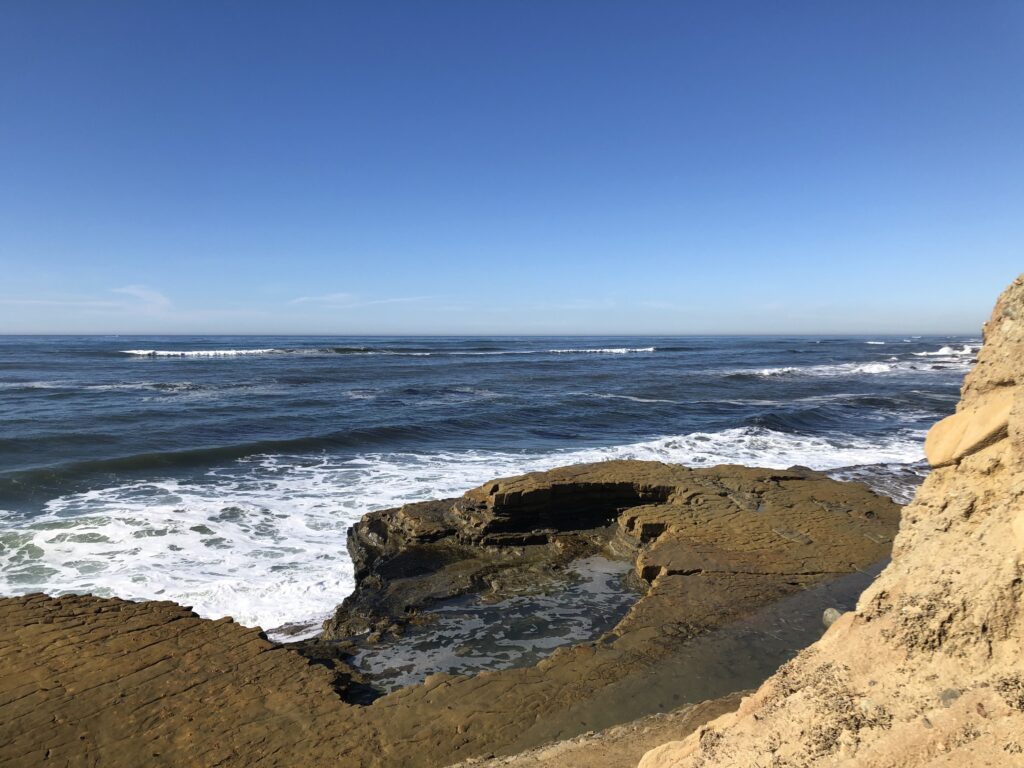
Beach Breaks
Lastly, beach breaks are the last type of surf break. Beach breaks are waves that break on the sand floor of the beach. To put it simply, they are highly preferable for newbie surfers, helping them learn to surf. A sandy floor typically doesn’t hurt as much when you hit the bottom. Beach breaks occur often due to the discharge of sand and its buildup along a sandbar.
With that said, many beach breaks are also fast breaking waves. A fast breaking beach break can be hollow and powerful. As such, these types of surf breaks are better suited for intermediate and advanced surfers.
Another characteristic of breaks is that they are inconsistent. The quality of the wave will vary depending on the positioning and the movement of the sand floor. It might shift in a week or even after an entire year! Typically, you can find several peaks that will break along a beach. This is different than point breaks or reef breaks which usually have one primary take off zone.
Due to the variety of ocean floors, beach breaks can also have variety ranging from fast to slow. Typically, you want to surf a beach break on a combo swell (meaning from both the North and the South). This is because it will wedge up a noticeable peak which can surf in either direction. The best beach break surfing in San Diego is usually found in Autumn during combo swells and Santa Anas.
Beach breaks are probably the most common type of surfing break found in San Diego. Below are some of my favorites – along with their recommended level of surf skill:
- Oceanside Harbor (Intermediate)
- Oceanside Pier (Intermediate)
- Ponto Jetties Surf Spot (Intermediate to Advanced)
- D Street Encinitas (Intermediate)
- Stone Steps (Beginner)
- Georges (Intermediate)
- Blacks Beach Surf Spot (Intermediate to Advanced)
- La Jolla Shores (Beginner)
- Crystal Pier (Beginner to Intermediate)
- Mission Beach (Beginner to Intermediate)
- Ocean Beach Pier Surf Spot (Intermediate)
- Scripps Pier (Intermediate)
- Silver Strand State Beach (Beginner to Intermediate) – secretly known as a top uncrowded surf spot in San Diego
- Imperial Beach (Advanced) – hollow, pounding beach break
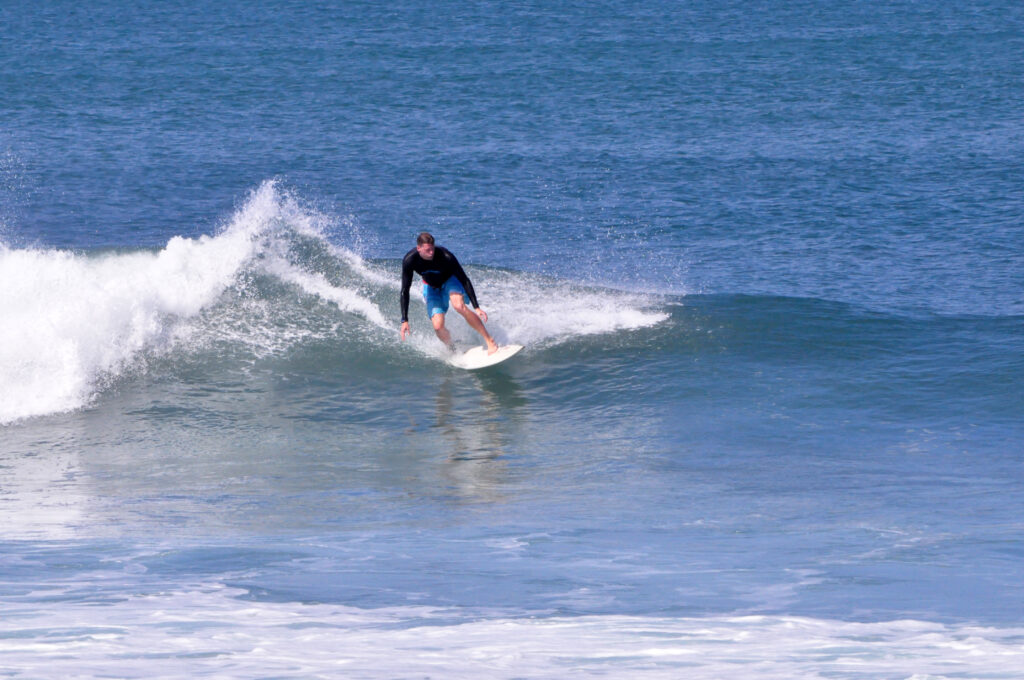
What is the Best Type of Surf Break?
Point breaks are usually the favorite type of surf break due to their long rides. However, the best type of surf break really depends on your surf style and preference of surfing. For example, if you prefer short, punchy waves and like doing aerial maneuvers – beach breaks are best. Alternatively, if you like seeking tubes; reef breaks are usually your best choice.
The type of surf break you prefer is up to you but they are all fun and can challenge you in different ways.
Conclusion on Types of Surf Breaks in San Diego
So what are you waiting for? You’re aware of various surfing terms, the three types of surf breaks (beach breaks, reef breaks, point breaks), and where to find each in San Diego! Now, you should gear up and plan to choose the best wave for you.
I release a new review for a surf spot in San Diego or around the world after I surf it. Subscribe for the latest here:


